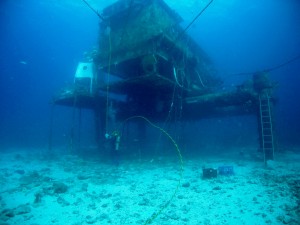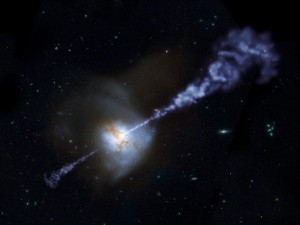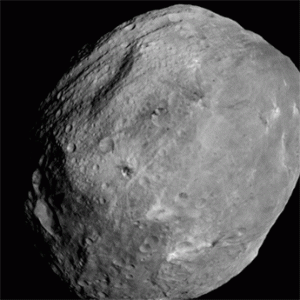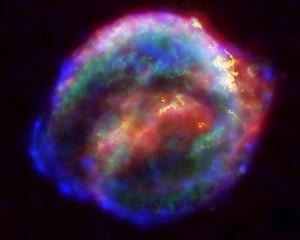Archive for the ‘Space News’ Category
First Man on . . . the Asteroid?
Aim for the stars? Sorry, you’re going to have more reasonable expectations. How about Mars? The way we’re going, I’ll be lucky to see that in my lifetime, and I’m only 29. How about a return trip to the Moon? Well, after the way everyone in the media laughed at Newt Gingrich‘s campaign goal of establishing a permanent base on the Moon, I’m guessing the public’s not up for that project.
But don’t despair: for some strange reason, asteroids have really captured everyone’s imagination. Billionaires, space programs, and the public seem to all be happy with aiming for the asteroids. I don’t understand why – surely there is a greater probability of finding all sorts of minerals on the Moon or Mars – but perhaps asteroid are all we have the guts for these days. Plus, they get all sorts of movie attention. Have you ever seen a Hollywood film about us the successful Apollo missions? No, all we got was the failure – Apollo 13. How about a movie about a mission to Mars? Only if we meet something unpleasant there. The only time our space program has any success in the movies is when it comes to asteroids
So, enter NEEMO (NASA Extreme Environment Mission Operations) 16, the latest in the training programs for astronauts being prepared to work in deep space, which take place underwater:
The first NEEMO mission occurred in 2001, and they have since been essential in helping us get an idea about what astronauts might need in order to work in such a hostile environment. But what kind of deep space mission are the astronauts of NEEMO 16 being trained for? You guessed it – according to this article from the Telegraph, it’s to land and work on asteroids.
Do Black Holes Inhibit Star Formation?
It’s actually more of an open question than I would have thought. At face value, you would expect that the presence of a powerful black hole would disrupt the normal star formation processes, and the evidence is certainly leaning that way. However, there’s still enough uncertainty on the issue to keep some astronomers with the Herschel Space Observatory mission busy (and, I suppose, paid).
The results from Herschel show that in galaxies 8 to 12 billion light years away (and therefore 8 to 12 billion years ago), star formation slowed dramatically, and the deceleration was greater in galaxies with large central black holes. As would seem logical, the black holes ripped up the coalescing gas, keeping it from gathering into the necessary density. You can read more about it here.
The most striking fact presented by the article is the degree to which star formation has declined since that time. Eight to twelve billion years ago, stars were forming at ten times the rate that they are now, and galaxies were a thousand times brighter than they are now! It’s difficult to really grasp the magnitude of the fact. I mean, we all hear that the universe has cooled over its life, and will continue to get colder, but . . . we don’t often talk about how much darker it’s getting, do we?
I’m sure some astronomer will point out that, if you look at infrared wavelengths, it’s actually quite bright, but the point is that the infrared light was produced long ago. Our light bulbs are going out and a lot of the light is only there because it took this long to get to us. And the damned black holes have been making the matters worse!
Ahem. Anyway, it does make you wonder whether the fundamental constants of the universe were as perfectly tuned as they could have been, doesn’t it?
Details from NASA’s Vesta Press Conference
In 2007, NASA launched the Dawn spacecraft bound for the solar system’s second largest asteroid – Vesta. It entered the orbit of Vesta in July of 2011 and will continue in orbit until August of this year, after which it will be bound for the largest asteroid – Ceres – which it will reach in 2015.
The press conference about Dawn’s findings today centered on Vesta’s Rheasilvia Crater and its age. Rheasilvia is a massive impact crater with a central peak – Rheasilvia Mons – which ranks as the tallest known mountain in the solar system (with Olympus Mons a close second). The material ejected by the impact amounts to about 250,000 cubic miles, and makes up around six percent of the material in the asteroid belt, including the Vesta family of asteroids. Some of it has even reached Earth, so that scientists knew what to look for when launching this mission to Vesta. Evidence now clearly indicates that the impact occurred a billion years – much more recently that the majority of impacts on the Moon, which occurred over three billion years ago. According to the researchers in the conference, this puts constraints on ideas about solar system dynamics – the way objects have moved around the solar system since its formation.
Two Type Ia Supernovae?
Type Ia supernovae are “standard candles” with which we measure the universe. We can use them for this purpose because they appear to have definite light curves – that is, their luminosity decreases with time at a predictable rate. Since time and distance are generally interchangeable when dealing with stellar phenomena (both are governed by the speed of light – if we see something happening one light year away, it’s happening one year in the past), we know that the dimmer a Type Ia supernova is, the further away it is, and we can get the particular distance.
Why do Type Ia supernovae have this quality when other supernovae don’t? It’s because of the way they’re formed. They start off as a binary star system with a stable white dwarf star at the center. Over time, the central star accumulates material from its companion star through gravity, and approaches the Chandrasekhar limit – the maximum size a white dwarf can reach without collapsing – which is around 1.4 times the mass of our Sun. Since the supernova occurs right when the white dwarf reaches this limit, the nature of the collapse is pretty close to exact. Here’s a diagram from NASA to illustrate some of the particulars:
NASA’s NuSTAR Black Hole Hunter
NASA’s Jet Propulsion Lab just posted this video introducing the Nuclear Spectroscopic Telescope Array (NuSTAR) X-Ray telescope. This is a purely non-technical (public-friendly) presentation, so I’ll try and get more detailed information about the project. Personally, I’m more interested in the launch method, which is an L-1011 carrying one of Burt Rutan’s Pegasus rockets.
Just a thought: NASA really needs to do a better job of explaining to the public why the information we might get from black hole research might be valuable. They certainly don’t make that clear in this video, and I worry that they risk facing more budget cuts if they don’t grab the public’s attention a bit more compellingly.
The project was supposed to launch on March 21st, but has been delayed, and they’re looking at a possible June launch. Apparently, the delay was due to software problems with the launch vehicle.



